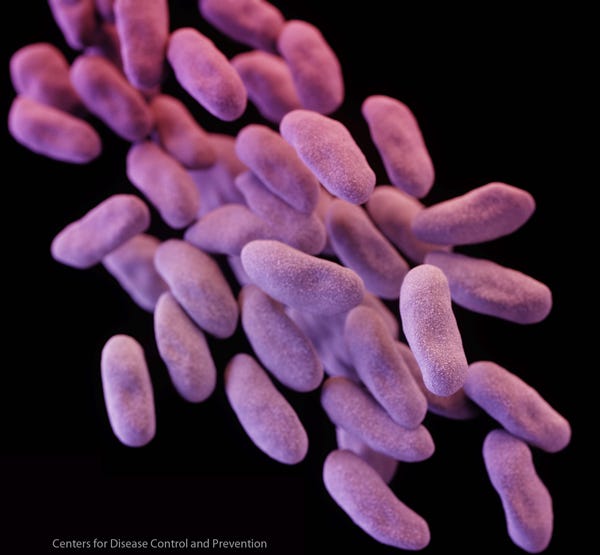August 4, 2015
The agency is now informing health providers of options to prevent the scopes from causing superbug outbreaks, but none of them are optimal.
Nancy Crotti
FDA is further elaborating what hospitals and other healthcare facilities might do to prevent a special type of endoscope called a duodenoscope from causing a deadly superbug outbreak.
FDA is saying facilities should apply one of four methods on top of following the device manufacturer's cleaning instructions.
None of the four options that FDA has outlined are great, though, when it comes to decontaminating the complex devices.
For its part, FDA argues that the methods might improve chances to keep patients free from superbug infection when treated with a scope designed for multiple uses.
The four methods are:
Microbiological culturing, or sampling a duodenoscope's channels and its distal end, and culturing those samples to identify bacterial contamination. This method is costly, takes staff extra time, and even more time to produce a culture, FDA said.
Sterilization using ethylene oxide gas, which could be effective for heat-sensitive instruments such as duodenoscopes. The drawbacks: It's expensive, not readily available and may be toxic to reprocessing staff and patients.
Use of a liquid chemical sterilant processing system, which is apparently tricky. It requires rinsing a duodenoscope with highly purified (but not sterile) water following device sterilization, so the device does not remain completely free of all viable microbes. Inappropriate dilution of the liquid, insufficient exposure, or inadequate temperature may render this method ineffective, FDA said.
Repeat high-level disinfection, either manually or using Automated Endoscope Reprocessors (AERs). High-level disinfection involves immersing the device in a disinfectant. AERs wash and disinfect endoscopes and scope accessories in chemical solutions in order to kill microorganisms. This method is not compatible with all duodenoscopes.
High-profile deadly outbreaks have added urgency to the situation.
At least seven patients were infected and two died from a drug-resistant superbug at UCLA's Ronald Reagan Medical Center between October 2014 and January 2015.The exposures todrug-resistant bacterial strain carbapenem-resistant Enterobacteriaceae (CRE) were linked to a contaminated, reprocessed Olympus duodenoscope, a special type of endoscope used in more than 500,000 procedures annually in the U.S. Another 11 CRE-related patient deaths have been linked to duodenoscope procedures at Virginia Mason Medical Center in Seattle between 2012 and 2014.
Sold in the United States by manufacturers including Fujifilm, Olympus, and Pentax, duodenoscopes are threaded down through the digestive tract and into the small intestine. They provide the least invasive way of draining fluids from pancreatic and biliary ducts blocked by cancerous tumors, gallstones, or other conditions. However, the duodenoscopes' movable "elevator" mechanism at the tip, while improving efficiency and effectiveness, is challenging to disinfect, according to FDA.
Olympus is now facing a slew of lawsuits, and the U.S. Justice Department has been investigating.
Ronald Reagan Medical Center plans to install Langford IC Systems' "LIC" machine to clean endoscopes. The LIC's patented technology creates a fluid dynamic that pushes and pulls fluid at fierce velocity. Water and disinfectants reverse directions thousands of times through the scope and its channels, creating a scrubbing action on all of the endoscope's surfaces, corners and crevices, according to the creators of the dishwasher-like device.
The danger of acute infection from contaminated scopes is far broader than the duodenoscope that recently sickened patients at UCLA, the Los Angeles Times reported. A federal database revealed outbreaks of disease related to scopes used to examine the lungs, bladder, and colon, the newspaper reported.
The complexity of the scopes makes it difficult to remove contaminants, particularly a slimy layer of bacteria and yeast known as a biofilm, the Times story said.
FDA warned hospitals about improperly cleaned scopes in 2009, but took four years to settle on rules regarding disinfection of scopes, the Times said.
The additional decontamination strategies came from FDA's Gastroenterology-Urology Devices Panel of the Medical Devices Advisory Committee, convened in May and made up of representatives from severalhealthcare facilities.
Following the UCLA outbreak, FDA began to require duodenoscope manufacturers applying for agency approval to provide studies that prove their scopes can be disinfected. These rules do not apply to duodenoscopes that are already on the market.
The Centers for Disease Control released an Interim Duodenoscope Surveillance Protocol , which includes several options for duodenoscope reprocessing. While FDA called CDC's protocol "a good tool," the agency said the method is unproven and yields false positive and negative results.
Refresh your medical device industry knowledge at MEDevice San Diego, September 1-2, 2015. |
Nancy Crotti is a contributor to Qmed and MPMN.
Like what you're reading? Subscribe to our daily e-newsletter.
About the Author(s)
You May Also Like



